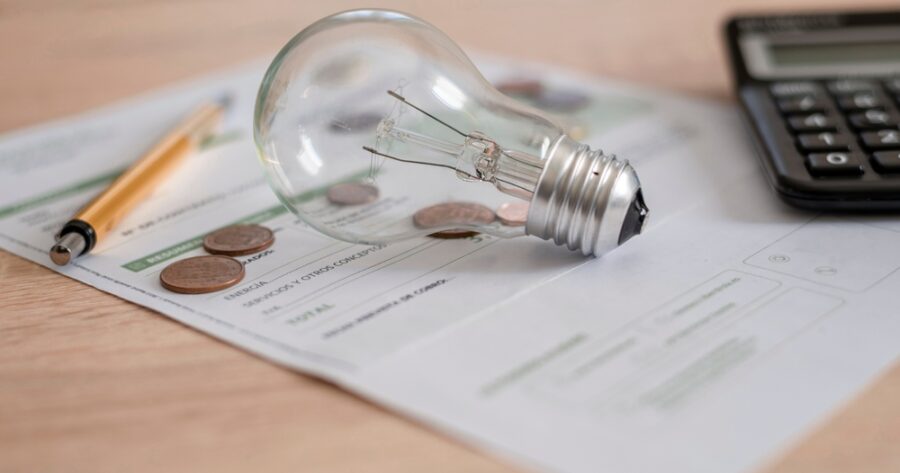Saving money on utility bills is easier than you might think. With small changes in energy habits, you can reduce monthly costs while helping the environment. From upgrading appliances to adjusting everyday practices, these practical steps will make a noticeable difference. Here’s how you can start lowering your utility expenses and enjoy a more energy-efficient home.
Choose Energy-Efficient Appliances
Switching to energy-efficient appliances can save a significant amount on your bills. Appliances like refrigerators, washers, and water heaters labeled as “Energy Star” use less power. Though these upgrades can be an investment, they save you more in the long run due to lower electricity usage.
Older models often consume more energy. So, consider replacing them with newer, efficient options. While the upfront cost may be higher, energy-efficient appliances will reduce utility bills month after month, helping you recoup your initial expenses faster.
Adjust Your Thermostat and Use a Programmable Option
Heating and cooling are major contributors to household utility expenses. By adjusting your thermostat, you can immediately save money. Set it lower in the winter and higher in the summer when you’re at home, and adjust it further when you’re away or asleep. Reducing the temperature by a few degrees, especially overnight, can lead to noticeable savings.
For even better results, try a programmable thermostat. These allow you to set heating and cooling schedules based on your routine. Some models even learn your habits and adjust automatically, maximizing energy efficiency without sacrificing comfort. This small change can significantly impact your overall heating and cooling costs.
Seal Gaps and Insulate
Poor insulation is one of the biggest sources of energy waste in homes. Air leaks around windows, doors, and ducts cause your heating and cooling systems to work harder, raising energy costs. Check for drafts by feeling around doors and windows, especially during colder months, when leaks are more obvious.
Adding insulation or sealing gaps is a relatively easy fix. You can use caulk or weather stripping around windows and doors to block drafts. Adding insulation to attics, basements, and walls will also help retain heat in winter and keep cool air inside during summer. By preventing air from escaping, you’ll make your home more energy-efficient and see lower utility bills.
Unplug Unused Devices and Use Power Strips
Even when devices aren’t in use, they can still consume energy. Known as “phantom” or “standby” power, this wasted electricity can add up over time. Common culprits include phone chargers, gaming consoles, computers, and kitchen appliances. Unplugging these devices when they’re not in use is an easy way to save energy.
Another helpful option is using power strips. Connect multiple devices to one power strip, which you can switch off with one button when they’re not needed. This method is especially useful for entertainment centers or home offices, where many devices are connected at once. Cutting down on standby power can make a small yet impactful difference on your utility bills.
Use Water Efficiently
Water costs can also contribute to high utility bills. Simple changes in water usage can lead to noticeable savings. For example, take shorter showers, fix leaky faucets, and only run the dishwasher or washing machine with full loads. These actions conserve water and reduce your utility expenses.
Installing low-flow showerheads and faucets is another effective strategy. These devices limit water flow without compromising pressure, helping you save gallons of water each day. If you live in an area with water restrictions or high rates, these small changes will make a big difference on your water bill over time.
Opt for LED Lighting
Lighting makes up a large portion of household energy use. Replacing traditional bulbs with LED lights can lower energy consumption. LEDs use significantly less energy than incandescent bulbs and last much longer, meaning you won’t need to replace them as frequently.
LED bulbs are available for all kinds of fixtures, including dimmable and outdoor lights. Although they cost a bit more upfront, the long-term savings in energy use make them a cost-effective choice. Switching to LEDs is one of the simplest ways to save money on your monthly electricity bill without sacrificing brightness or comfort.
Take Advantage of Utility Company Programs
Many utility companies offer programs and incentives to help you save. Some provide rebates for energy-efficient appliances or offer no-fee home energy audits. A home energy audit identifies areas where you could improve efficiency and reduce utility bills. It might reveal air leaks, outdated appliances, or insufficient insulation.
Check with your utility provider to see if they offer time-based rates, where you can save by using electricity during off-peak hours. These programs can lead to noticeable savings, especially if you can shift energy-intensive activities like laundry or dishwashing to times when rates are lower.
Reduce Your Utility Bills
Reducing your utility bills doesn’t require drastic changes; small adjustments can add up to big savings. By investing in energy-efficient appliances, adjusting your thermostat, sealing leaks, and using LEDs, you can enjoy lower monthly costs.
Whether you make one change or a few, these steps will help you save money, lower your environmental impact, and create a more comfortable home.
